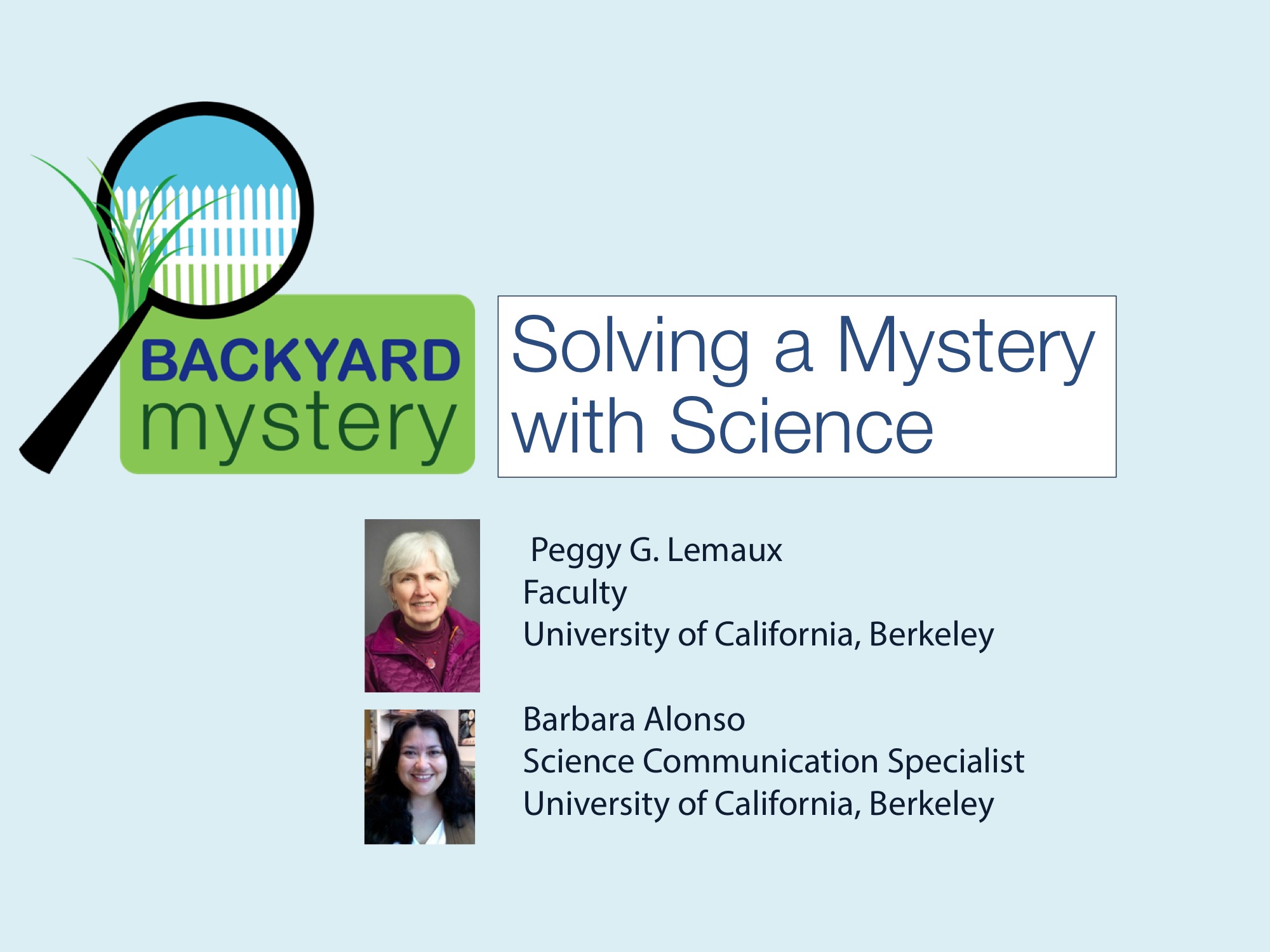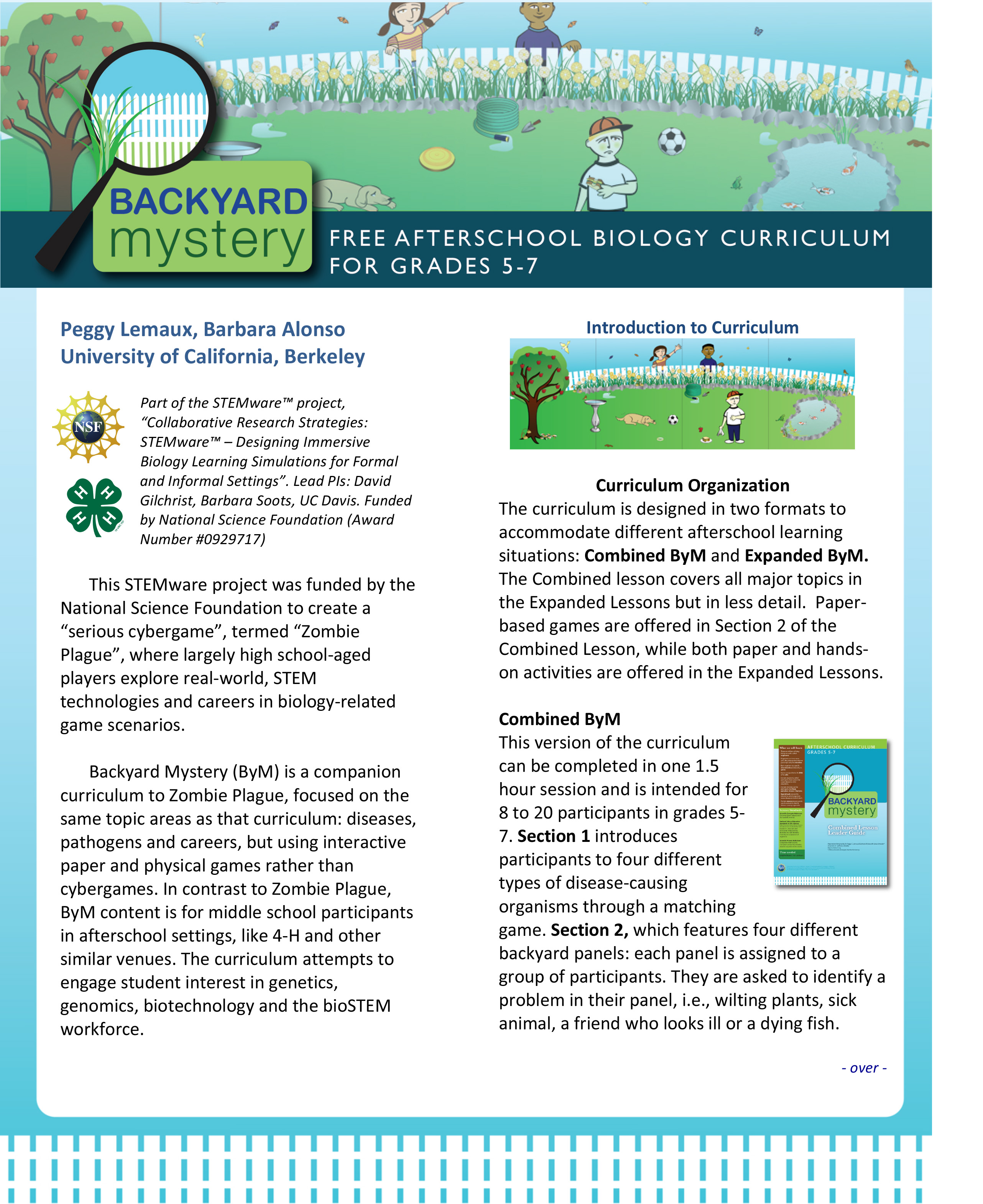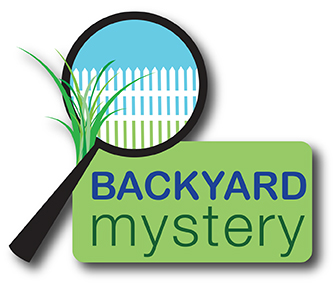-
Contacts:
- Peggy G. Lemaux, Ph.D.
111 Koshland Hall
Department of Plant and Microbial Biology
University of California
Berkeley, CA 94720-3102
Email: lemauxpg@berkeley.edu
-
Presentation
-
Backgrounder

Download our talk (PDF format, 2mb) presented to the California Afterschool Network on June 6, 2014.
 Download our 2-page backgrounder, which gives more detail about the curriculum. Share with fellow facilitators and teachers!
Download our 2-page backgrounder, which gives more detail about the curriculum. Share with fellow facilitators and teachers!About Backyard Mystery
 Backyard Mystery is part of the STEMware™ project, “Collaborative Research Strategies: STEMware™ – Designing Immersive Biology Learning Simulations for Formal and Informal Settings”. The curriculum was developed by Dr. Peggy G. Lemaux and her former assistant, Science Communication Specialist Ms. Barbara Alonso at the University of California, Berkeley. Dr. Jenne Stoanker at Stanford University has also helped in development of the curriculum.
Backyard Mystery is part of the STEMware™ project, “Collaborative Research Strategies: STEMware™ – Designing Immersive Biology Learning Simulations for Formal and Informal Settings”. The curriculum was developed by Dr. Peggy G. Lemaux and her former assistant, Science Communication Specialist Ms. Barbara Alonso at the University of California, Berkeley. Dr. Jenne Stoanker at Stanford University has also helped in development of the curriculum.
This STEMware project, funded by the National Science Foundation, involved creation of two curricula. The first is a “serious cybergame”, termed “Zombie Plague”, where largely high school-aged players explore real-world, STEM technologies and careers in biology-related game scenarios inovlving investigative science related to pathogens.
A companion curriculum, Backyard Mystery is focused on the same topic areas: diseases, pathogens and careers, but involves interactive paper and physical activities rather than cybergames. In contrast to Zombie Plague, Backyard Mystery content is for middle school participants in afterschool settings, like 4-H and other similar venues. The curriculum attempts to engage student interest in genetics, genomics and the bioSTEM workforce.
 We also have another curriculum, DNA for Dinner, which is also available for complimentary download. Please visit our page dedicated to this project!
We also have another curriculum, DNA for Dinner, which is also available for complimentary download. Please visit our page dedicated to this project!
Participants
- Peggy G. Lemaux, Ph.D.
University of California ,Berkeley - Barbara Alonso
University of California ,Berkeley
- Jenne Stonaker, Ph.D.
Stanford University -
Advisors
- Barbara Soots
Formerly at University of California ,Davis
- David Gilchrist, Ph.D.
University of California ,Davis
- Martin Smith, Ph.D.
University of California, Davis -
Funding
 National Science Foundation Grant No. DRL-0929769
National Science Foundation Grant No. DRL-0929769 -
Science Standards
Scientific Concepts Addressed: Discovery-based research and the scientific method
National Science Education Standards in Life Sciences: Grades 5-7, Structure and function in living systems; Reproduction and heredity; Diversity and adaptation of organisms
Scientific Process Skills Used: Categorize/order/classify; compare/contrast/hypothesize; observe; organize/order/classify


